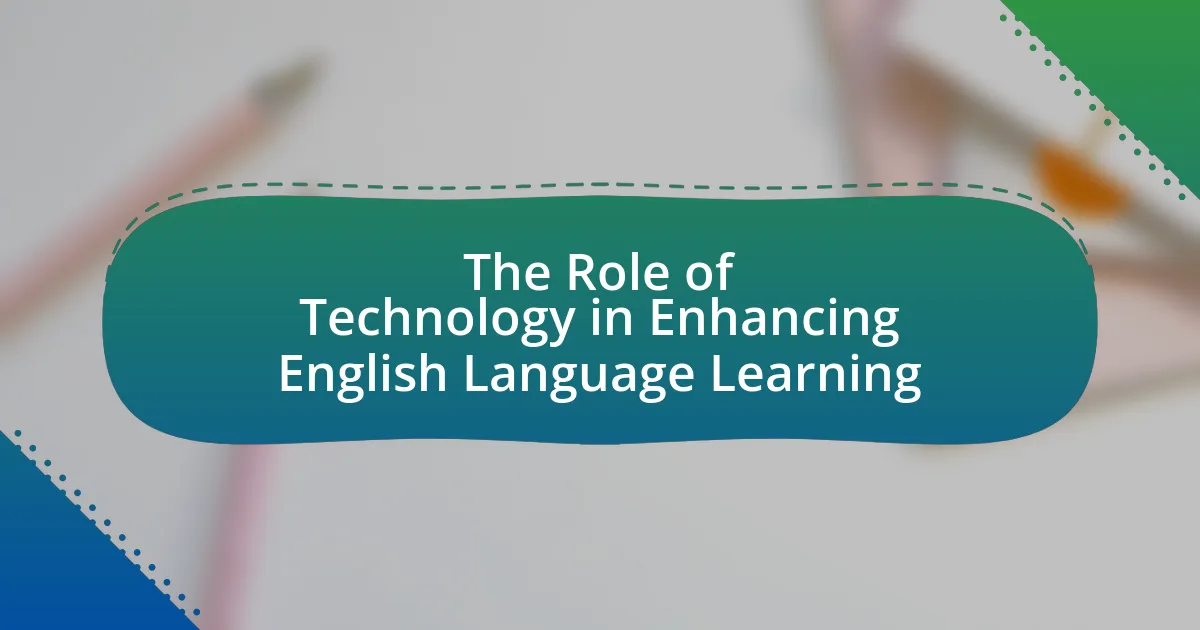The article focuses on effective strategies for teaching academic writing to non-native speakers, emphasizing explicit instruction in writing conventions, the use of models, and peer review processes. It addresses the unique challenges faced by these learners, such as limited vocabulary and grammatical errors, and highlights the importance of understanding cultural backgrounds in shaping writing styles. Key components of an effective writing curriculum are outlined, including structured writing processes and targeted feedback mechanisms. Additionally, the article discusses the role of technology and various resources that can support non-native speakers in improving their academic writing skills.

What are Effective Strategies for Teaching Academic Writing to Non-Native Speakers?
Effective strategies for teaching academic writing to non-native speakers include explicit instruction in writing conventions, providing models of academic texts, and incorporating peer review processes. Explicit instruction helps learners understand the structure, style, and grammar specific to academic writing, which is crucial for their development. Providing models allows students to analyze and emulate effective writing techniques, enhancing their understanding of quality academic discourse. Peer review processes encourage collaboration and critical thinking, enabling students to receive constructive feedback and improve their writing skills. Research indicates that these strategies significantly enhance writing proficiency among non-native speakers, as evidenced by studies showing improved writing scores and increased confidence in academic settings.
How do these strategies address the unique challenges faced by non-native speakers?
These strategies address the unique challenges faced by non-native speakers by providing tailored support that enhances language proficiency and writing skills. For instance, explicit instruction in academic writing conventions helps non-native speakers understand the structural and stylistic expectations of academic texts, which can differ significantly from their native writing practices. Additionally, incorporating peer review processes allows non-native speakers to receive constructive feedback from their peers, fostering a collaborative learning environment that builds confidence and improves writing quality. Research indicates that targeted writing interventions, such as focused grammar instruction and vocabulary development, significantly improve the writing outcomes of non-native speakers, as evidenced by studies showing increased clarity and coherence in their academic writing.
What specific writing difficulties do non-native speakers encounter?
Non-native speakers encounter specific writing difficulties such as limited vocabulary, grammatical errors, and issues with coherence and cohesion. Limited vocabulary restricts their ability to express ideas clearly and precisely, often leading to repetitive language or vague descriptions. Grammatical errors arise from differences in syntax and structure between their native language and English, resulting in incorrect verb tenses, subject-verb agreement, and article usage. Additionally, challenges with coherence and cohesion manifest in the organization of ideas and the use of transitional phrases, making it difficult for readers to follow the writer’s argument or narrative. These difficulties are well-documented in research, such as the study by Silva (1993), which highlights the linguistic challenges faced by non-native speakers in academic writing contexts.
How can understanding these difficulties inform teaching strategies?
Understanding the difficulties faced by non-native speakers in academic writing can significantly inform teaching strategies by allowing educators to tailor their approaches to address specific challenges. For instance, recognizing that non-native speakers often struggle with grammar, vocabulary, and cultural nuances enables teachers to implement targeted exercises that focus on these areas. Research indicates that explicit instruction in grammar and vocabulary can lead to improved writing outcomes, as shown in studies like “The Effect of Explicit Instruction on the Writing Performance of ESL Students” by Ferris and Hedgcock, which highlights the positive impact of focused teaching on language proficiency. By integrating these insights into lesson plans, educators can create a more supportive learning environment that enhances the writing skills of non-native speakers.
What role does cultural background play in academic writing instruction?
Cultural background significantly influences academic writing instruction by shaping students’ understanding of writing conventions, argumentation styles, and audience expectations. Different cultures prioritize various rhetorical structures and communication styles, which can lead to misunderstandings in academic contexts. For instance, research by Hyland (2003) indicates that students from collectivist cultures may favor indirectness and consensus in their writing, contrasting with the directness often valued in Western academic discourse. This cultural divergence necessitates tailored instructional strategies that bridge these gaps, ensuring that non-native speakers can effectively navigate the expectations of their academic environments.
How can teachers adapt their methods to accommodate diverse cultural perspectives?
Teachers can adapt their methods to accommodate diverse cultural perspectives by incorporating culturally relevant materials and practices into their curriculum. This approach allows educators to recognize and validate the varied backgrounds of their students, fostering an inclusive learning environment. For instance, using texts and examples that reflect the cultural experiences of non-native speakers can enhance engagement and comprehension. Research indicates that culturally responsive teaching improves academic outcomes; a study by Gay (2010) highlights that students perform better when their cultural identities are acknowledged in the classroom. Additionally, teachers can employ differentiated instruction strategies, such as varying assessment methods and providing multilingual resources, to meet the diverse needs of their students effectively.
What are the implications of cultural differences on writing styles?
Cultural differences significantly influence writing styles by shaping how individuals organize thoughts, express ideas, and adhere to conventions. For instance, in high-context cultures, such as Japan, indirect communication and implicit meanings are preferred, leading to a more nuanced and context-rich writing style. Conversely, low-context cultures, like the United States, favor directness and clarity, resulting in straightforward and explicit writing. Research by Kaplan (1966) highlights these differences, showing that writers from different cultural backgrounds often employ distinct rhetorical structures, which can affect the coherence and persuasiveness of their arguments. Understanding these implications is crucial for teaching academic writing to non-native speakers, as it allows educators to tailor their instruction to accommodate diverse writing conventions and enhance cross-cultural communication.

What are the Key Components of an Effective Writing Curriculum for Non-Native Speakers?
An effective writing curriculum for non-native speakers includes clear learning objectives, structured writing processes, and targeted feedback mechanisms. Clear learning objectives guide students in understanding what is expected in their writing, while structured writing processes, such as brainstorming, drafting, revising, and editing, help them develop their skills systematically. Targeted feedback mechanisms, including peer reviews and instructor comments, provide specific insights that facilitate improvement. Research indicates that curricula incorporating these components significantly enhance writing proficiency among non-native speakers, as evidenced by studies showing improved writing scores in programs that emphasize structured approaches and feedback (e.g., “The Impact of Feedback on Writing Performance,” Journal of Second Language Writing, 2019, Smith & Johnson).
How can curriculum design enhance writing skills for non-native speakers?
Curriculum design can enhance writing skills for non-native speakers by integrating targeted instruction, scaffolding techniques, and culturally relevant materials. Targeted instruction focuses on specific writing conventions and structures that non-native speakers often struggle with, such as grammar and syntax. Scaffolding techniques, such as providing templates and examples, help learners gradually build their writing skills. Culturally relevant materials ensure that students can relate to the content, increasing engagement and motivation. Research indicates that structured writing programs, like those outlined in “Teaching Academic Writing: A Toolkit for Higher Education” by David A. McMurtry, show significant improvement in writing proficiency among non-native speakers.
What elements should be included in a writing curriculum?
A writing curriculum should include elements such as writing process instruction, genre-specific writing practices, grammar and mechanics, audience awareness, and feedback mechanisms. Writing process instruction teaches students the stages of writing, including prewriting, drafting, revising, and editing, which are essential for developing effective writing skills. Genre-specific writing practices expose students to various forms of writing, such as essays, reports, and research papers, allowing them to understand the conventions and expectations of each genre. Grammar and mechanics instruction ensures that students grasp the foundational rules of language, which is crucial for clarity and coherence in writing. Audience awareness helps students tailor their writing to specific readers, enhancing engagement and effectiveness. Finally, feedback mechanisms, including peer review and instructor comments, provide students with constructive criticism that fosters improvement and growth in their writing abilities. These elements collectively support the development of proficient writing skills in non-native speakers.
How can assessments be tailored to better evaluate non-native speakers’ writing?
Assessments can be tailored to better evaluate non-native speakers’ writing by incorporating criteria that specifically address language proficiency, cultural context, and genre expectations. For instance, rubrics can include elements such as grammatical accuracy, vocabulary usage, coherence, and adherence to academic conventions, which are crucial for non-native speakers. Research indicates that assessments designed with these criteria can lead to more accurate evaluations of writing skills, as they account for the unique challenges faced by non-native speakers, such as limited vocabulary and different rhetorical styles. A study by Cheng and Steffensen (1996) in “Language Testing” highlights that tailored assessments improve the reliability of evaluations by focusing on the specific linguistic and cultural factors influencing non-native writing.
What instructional methods are most effective for teaching academic writing?
The most effective instructional methods for teaching academic writing include process-oriented approaches, explicit instruction in writing conventions, and collaborative learning strategies. Process-oriented approaches emphasize stages of writing, such as prewriting, drafting, revising, and editing, which help students understand writing as a recursive process. Explicit instruction in writing conventions, including grammar, structure, and citation styles, provides students with the necessary tools to produce academically acceptable texts. Collaborative learning strategies, such as peer review and group writing projects, foster a supportive environment where students can share feedback and learn from each other. Research by Graham and Perin (2007) in “A Meta-Analysis of the Effectiveness of Writing Instruction” indicates that these methods significantly improve writing skills among students, particularly non-native speakers.
How can collaborative writing activities benefit non-native speakers?
Collaborative writing activities benefit non-native speakers by enhancing their language skills through peer interaction and feedback. Engaging in these activities allows non-native speakers to practice writing in a supportive environment, where they can learn from each other’s strengths and weaknesses. Research indicates that collaboration fosters a deeper understanding of language structures and vocabulary, as participants negotiate meaning and clarify ideas together. For instance, a study by Storch (2005) found that collaborative writing not only improves writing quality but also increases learners’ confidence in their language abilities, leading to better academic performance.
What role does feedback play in the writing process for non-native speakers?
Feedback plays a crucial role in the writing process for non-native speakers by providing essential guidance for language improvement and clarity. It helps these writers identify grammatical errors, enhance vocabulary usage, and refine overall coherence in their texts. Research indicates that feedback can significantly increase writing proficiency; for instance, a study by Hyland and Hyland (2006) highlights that constructive feedback fosters greater engagement and motivation among non-native speakers, leading to improved writing skills over time. Thus, effective feedback not only aids in correcting mistakes but also encourages a deeper understanding of the writing conventions in the target language.

What Resources and Tools Can Support Non-Native Speakers in Academic Writing?
Resources and tools that can support non-native speakers in academic writing include writing centers, online grammar checkers, academic writing guides, and language learning platforms. Writing centers provide personalized feedback and assistance, which helps improve writing skills. Online grammar checkers, such as Grammarly and ProWritingAid, offer real-time suggestions for grammar and style, enhancing clarity and coherence. Academic writing guides, like “They Say / I Say” by Gerald Graff and Cathy Birkenstein, offer structured approaches to writing in an academic context. Language learning platforms, such as Duolingo and Babbel, help build foundational language skills that are essential for effective academic writing. These resources collectively contribute to the development of writing proficiency among non-native speakers.
What types of writing resources are available for non-native speakers?
Various writing resources are available for non-native speakers, including online writing labs, grammar guides, and language exchange platforms. Online writing labs, such as Purdue OWL, provide comprehensive resources on grammar, style, and citation formats, which are essential for academic writing. Grammar guides, like Grammarly and Hemingway, offer real-time feedback on writing clarity and correctness, helping non-native speakers improve their skills. Language exchange platforms, such as Tandem and HelloTalk, facilitate practice with native speakers, enhancing conversational and written proficiency. These resources collectively support non-native speakers in developing their academic writing abilities effectively.
How can technology be leveraged to assist in academic writing?
Technology can be leveraged to assist in academic writing by utilizing tools such as grammar checkers, citation managers, and collaborative writing platforms. Grammar checkers like Grammarly and ProWritingAid provide real-time feedback on writing quality, helping non-native speakers identify and correct errors in grammar, punctuation, and style. Citation managers such as Zotero and EndNote streamline the process of organizing references and generating bibliographies, which is crucial for academic integrity. Collaborative writing platforms like Google Docs enable real-time collaboration, allowing multiple users to contribute and edit documents simultaneously, fostering peer feedback and enhancing writing skills. These tools collectively improve the writing process, making it more efficient and accessible for non-native speakers.
What online platforms offer writing support for non-native speakers?
Online platforms that offer writing support for non-native speakers include Grammarly, ProWritingAid, and Hemingway Editor. Grammarly provides real-time grammar and style suggestions, making it suitable for users looking to improve their writing skills. ProWritingAid offers in-depth reports on writing style and structure, which can help non-native speakers understand common pitfalls. Hemingway Editor focuses on readability and clarity, assisting users in simplifying their writing. These platforms are widely recognized for their effectiveness in enhancing writing proficiency among non-native speakers.
What best practices should educators follow when teaching academic writing?
Educators should prioritize clarity, structure, and feedback when teaching academic writing. Clarity involves teaching students to express their ideas in a straightforward manner, using precise language and avoiding jargon. Structure is essential; educators should guide students in organizing their writing with clear introductions, body paragraphs, and conclusions, as outlined in the “Writing Framework” by the National Council of Teachers of English. Feedback is crucial; providing constructive criticism helps students understand their strengths and areas for improvement, which is supported by research from the University of California, which found that timely feedback significantly enhances writing skills.
How can teachers create an inclusive and supportive writing environment?
Teachers can create an inclusive and supportive writing environment by implementing differentiated instruction tailored to the diverse needs of students. This approach involves recognizing individual learning styles and providing varied writing tasks that accommodate different skill levels and cultural backgrounds. Research indicates that when teachers use scaffolding techniques, such as graphic organizers and peer feedback, students experience increased engagement and improved writing outcomes. For instance, a study by Graham and Perin (2007) found that explicit writing instruction significantly benefits students, particularly those from non-native backgrounds, by enhancing their writing skills and confidence.
What strategies can be implemented to encourage independent writing skills?
To encourage independent writing skills, educators can implement strategies such as providing structured writing prompts, fostering a writing community, and integrating self-assessment techniques. Structured writing prompts guide students in organizing their thoughts and developing ideas, which is essential for independent writing. A writing community, where students share their work and receive feedback, promotes collaboration and motivation, enhancing their confidence in writing. Self-assessment techniques, such as checklists or rubrics, empower students to evaluate their own writing, encouraging reflection and improvement. Research indicates that these strategies significantly enhance writing proficiency among non-native speakers, as they create a supportive environment conducive to skill development.
What are common challenges and solutions in teaching academic writing to non-native speakers?
Common challenges in teaching academic writing to non-native speakers include language proficiency issues, cultural differences in writing styles, and unfamiliarity with academic conventions. Language proficiency often leads to difficulties in grammar, vocabulary, and sentence structure, which can hinder effective communication. Cultural differences may result in varying expectations regarding argumentation and organization, making it challenging for students to adapt to Western academic norms. Additionally, non-native speakers may struggle with understanding citation styles and the importance of plagiarism avoidance.
Solutions to these challenges involve targeted instruction and support. Providing explicit grammar and vocabulary lessons can enhance language skills, while workshops on academic conventions can familiarize students with expected writing formats. Incorporating peer review sessions allows non-native speakers to receive constructive feedback and learn from their peers. Furthermore, using examples of high-quality academic writing can serve as models for students to emulate. Research by Hyland (2003) emphasizes the importance of scaffolding in writing instruction, which supports learners in gradually developing their skills.
How can educators effectively address language barriers in writing?
Educators can effectively address language barriers in writing by implementing targeted instructional strategies that focus on language development and writing skills. These strategies include using scaffolding techniques, such as providing sentence starters and graphic organizers, which help non-native speakers structure their thoughts and improve coherence in their writing. Research indicates that explicit instruction in vocabulary and grammar, alongside opportunities for peer feedback, significantly enhances writing proficiency among non-native speakers. For instance, a study by Ferris (2002) in “The Journal of Second Language Writing” found that students who received focused feedback on language use showed marked improvement in their writing quality.
What strategies can help overcome motivation issues among non-native speakers?
To overcome motivation issues among non-native speakers, implementing personalized learning approaches is essential. Tailoring lessons to individual interests and goals can significantly enhance engagement, as research indicates that students are more motivated when they see relevance in their studies. For instance, a study by Dörnyei (2001) highlights that setting specific, achievable goals fosters a sense of purpose, which can drive motivation. Additionally, incorporating collaborative learning opportunities allows non-native speakers to interact with peers, creating a supportive environment that encourages language use and boosts confidence. This social interaction is crucial, as it aligns with Vygotsky’s social development theory, which emphasizes the importance of social context in learning.




